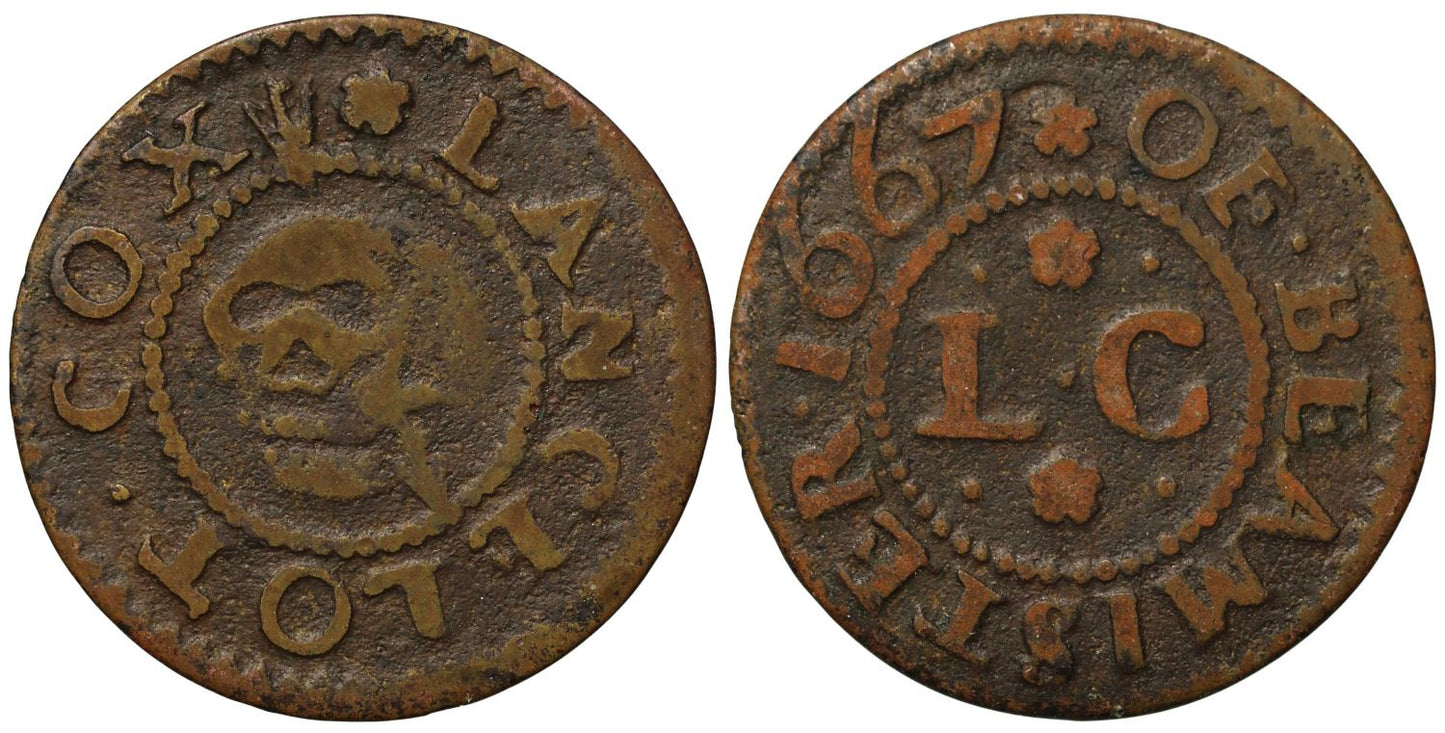FAQs
What makes a coin valuable?
I have coins to sell, what’s the next step?
How will my purchases be shipped?
What happens if I’m not entirely happy with my purchase?
Dorset 17th century Token, Beaminster, Lancelot Cox, Farthing 1667, skull/arrow
17th Century Token, Dorset, Beaminster, Lancelot Cox, Farthing, 1667, skull with arrow piercing cranium and protruding from jaw, feathers of arrow intrude legend, beaded circles and legend surrounding, cinquefoil stop at top, *LANCELOT. COX, rev. L.C at centre, .*. above and below, beaded circles and legend surrounding, *OF. BEAMINSTER. 1667, weight 1.09g (Boyne 5; BW 5). Toned good fine to almost very fine with a good depiction of skull.
We note Boyne's own example of this token resides in the British Museum and appears to be a little weaker than this example token | British Museum
According to the History of Beaminster (Richard Hine 1914), Lancelot Cox was an Overseer of the Poor in 1656 and a prominent non-conformist. After the passing of the Act of Uniformity in 1662, the congregation of some 100 non-conformists met at the house of Lancelot Cox a merchant of East Street. Five years later he issued his merchant token Farthing. Later in 1685 Lancelot joined Lord Monmouth's army and probably fought at the Battle of Sedgemoor. His name then appears on the list of those indicted in the Dorchester Bloody Assizes overseen by "hanging" Judge Jeffries, one of 19 men from Beaminster. The trials were held in the Oak Room at the Antelope Hotel where 271 men were sentenced to death, though only 74 of this total actually had the death sentence carried out.
FAQs
What makes a coin valuable?
I have coins to sell, what’s the next step?
How will my purchases be shipped?
What happens if I’m not entirely happy with my purchase?













